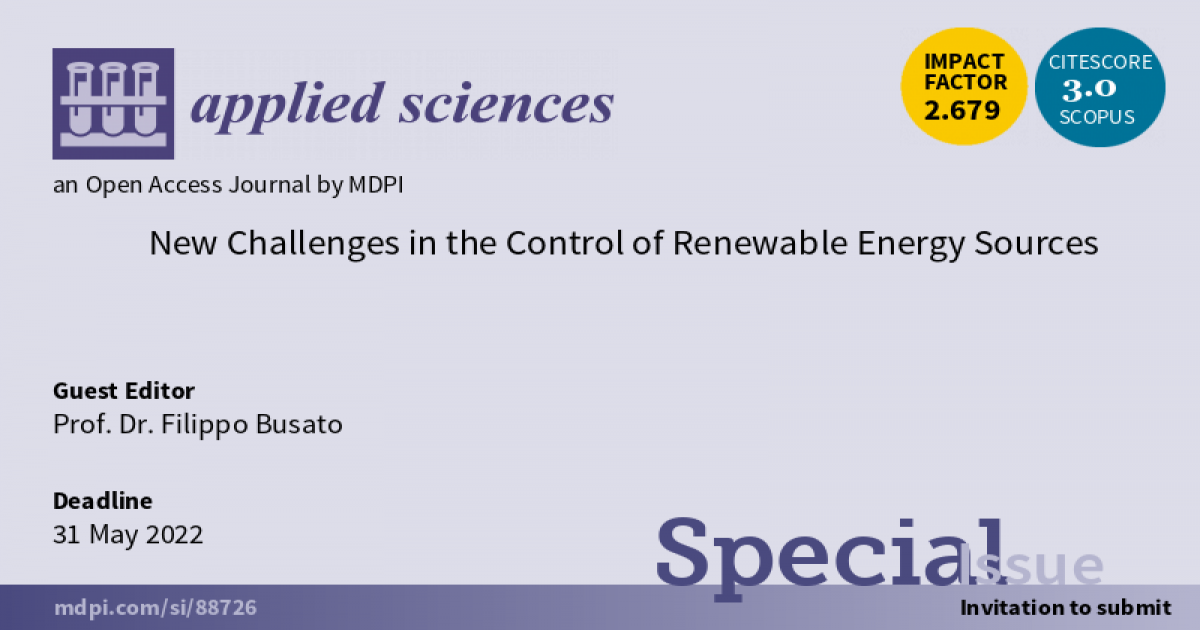New Challenges in the Control of Renewable Energy Sources
A special issue of Applied Sciences (ISSN 2076-3417). This special issue belongs to the section "Energy Science and Technology".
Deadline for manuscript submissions: closed (31 May 2022) | Viewed by 10407

Special Issue Editor
Interests: built environment; low carbon energy system; renewables; energy efficiency
Special Issues, Collections and Topics in MDPI journals
Special Issue Information
Dear Colleagues,
The development of renewables is the best option available to counteract greenhouse gas emissions and their effects on the planet’s climate. Though this development is quite promising due to its economic viability and to recent technological advancements, the future penetration of renewables is dependent on control and storage strategies for non-programmable energy sources. The effective control of renewables will be key to their successful development. Such control can be achieved through the fine tuning of network integration devices (storage, load management) and capacity control from the electric grid and user side, but at the same time, also from correct load management on thermal applications such as solar generation, heat pumps, and solar cogeneration.
Prof. Dr. Filippo Busato
Guest Editor
Manuscript Submission Information
Manuscripts should be submitted online at www.mdpi.com by registering and logging in to this website. Once you are registered, click here to go to the submission form. Manuscripts can be submitted until the deadline. All submissions that pass pre-check are peer-reviewed. Accepted papers will be published continuously in the journal (as soon as accepted) and will be listed together on the special issue website. Research articles, review articles as well as short communications are invited. For planned papers, a title and short abstract (about 100 words) can be sent to the Editorial Office for announcement on this website.
Submitted manuscripts should not have been published previously, nor be under consideration for publication elsewhere (except conference proceedings papers). All manuscripts are thoroughly refereed through a single-blind peer-review process. A guide for authors and other relevant information for submission of manuscripts is available on the Instructions for Authors page. Applied Sciences is an international peer-reviewed open access semimonthly journal published by MDPI.
Please visit the Instructions for Authors page before submitting a manuscript. The Article Processing Charge (APC) for publication in this open access journal is 2400 CHF (Swiss Francs). Submitted papers should be well formatted and use good English. Authors may use MDPI's English editing service prior to publication or during author revisions.
Keywords
- solar optimization
- heat storage
- multienergy
- threshold
- solar radiation
- wind power
- PV optimization
- electric storage
- electric management strategy





